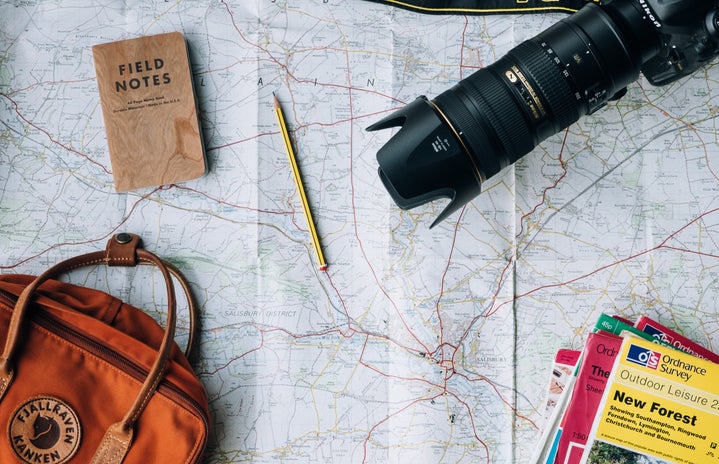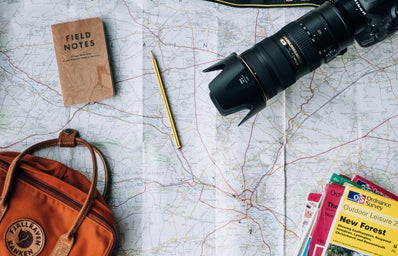Time to start actually planning…eek!
Welcome back to my study abroad series! In my last article, I previewed some of the preliminary steps for study abroad preparation. Since then, I’ve been busy tackling some of the more concrete pre-departure steps in order to set myself up for success. Click here to read the first entry in this series for insight into the application process, and keep reading for an outline of the more technical steps, such as filling out forms and course selection.
1. After you accept, start gathering information
One of the best parts about our interconnected world is the depth of information available on almost anything under the sun. While information about your specific program will be location-dependent, resources like the State Department, the Center for Disease Control (CDC) and country embassies have compiled essential information for travelers to know before they leave. It’s good to keep up to date with these sources for all things COVID-related and to make sure you’re on track for all pandemic-related requirements.
On a more fun note, now is also the time to start figuring out what makes your location unique, and consider factors such as if you might want to do a homestay, cultural norms and how to stay safe as a student abroad. It’s also important to establish who your main contacts will be at home and while you’re away. It’s likely that your program’s acceptance page will have all of this information in an easily accessible form, but if it doesn’t, consider starting this process early and reaching out to any contacts you’re given. Regardless, take notes! Whether it be on your computer, phone or paper, you’ll thank yourself later.
2. Fill out your forms
For me, this has been one of the most difficult parts of the process. As a detail-oriented person, I’m notorious for reviewing my forms over and over before hitting submit; however, with official forms like visas and passports, this might not be such a bad idea.
First and foremost, if you don’t have a passport yet, register for one ASAP. Passports take a while to obtain, and they’re much more expensive if you decide to expedite them. This is a good option if you’re nervous about it arriving on time, but keep in mind that you’ll need multiple documents to verify your identity. Getting your visa involves a similar process, and often you can’t request a visa without first possessing a valid passport. This should be your first step as soon as you enroll in a program.
Second, request your visa. This step is also location-specific, as each country has different requirements. If you’re an international student in the United States, check with your study abroad office for what this process looks like. Even if you’re a U.S. citizen, it’s a good idea to maintain communication with your advisors. This is also a step you should start as early as possible, as it often takes time to complete and you’ll likely need to provide identification documents. While it’s processing, take time to review the limitations on your visa, so that you have a better idea of what is allowed and expected of you while you’re abroad.
3. Plan your classes
If you’re like me, part of the reason you chose your program was the focus of its curriculum. Hopefully, that means there are class options you’re excited about! While it might feel weird to register for classes in a different way, exploring the opportunities you have abroad is a great substitute. One thing that makes studying abroad unique is that many classes have a field component or offer a chance to learn a new language in its native country. This is a great option to consider when you’re planning your semester or time abroad.
At the risk of sounding like a broken record, this is where checking in with your advisors is critical! There was a lot I didn’t know about the process until I met with my study abroad advisors, including how to transfer credits and the basics of my program. They may also have suggestions of what other students have enjoyed while abroad. Whatever you do, try and hunt down course information, be realistic about your own expectations and don’t be afraid to take a chance! You’re likely only abroad on a program like this once, so if something sounds interesting, don’t hold back from diving into it.
4. Prepare your mindset
One of the things I love about my majors is that they’ve helped me foster a global mindset. I know this will come in handy when I’m in Prague, but I’m still nervous about the culture and language shock that will likely ensue. Thankfully, apps like Duolingo or even basic YouTube videos can help with gaining some preliminary linguistic knowledge. Additionally, immersing yourself in the culture before you leave can help mitigate some of the initial surprise that comes from landing in a new place. My plan for the summer is to listen to some Czech music, research the culture, and maybe even watch a Czech show or movie (with subtitles, of course). While nothing compares to the learning that will take place while you’re abroad, thinking ahead can help you make the most of your experience even before you leave.
5. Enjoy the rest of the semester
Sadly, I’m writing this on the last day before finals begin (I know, I’m procrastinating). With that said, it has really been hitting me that my time on campus is limited. As excited as I am for what fall will bring, I’m sad to leave my friends and the life I’ve built in Madison behind, even temporarily. The past few weeks have been all about embracing every moment I have left on campus, because I know I’ll miss them when I’m gone. Take it all in, but also make sure to finish the semester strong. The journey ahead is exciting, but there is still so much of the present to live in!
Although this list isn’t extensive, I hope it provides some assistance as you prepare for or think about going abroad. Stay tuned for my recap of my semester abroad in (gasp!) January 2023. Until then, Jděte na jezevce (Go Badgers)!


